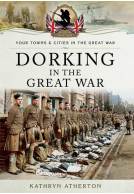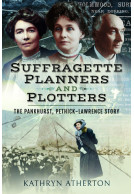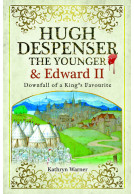Mary Neal and the Suffragettes Who Saved Morris Dancing (ePub)
Imprint: Pen & Sword History
Series: Trailblazing Women
File Size: 4.7 MB (.epub)
Pages: 224
ISBN: 9781399061520
Published: 30th January 2024
| Other formats available - Buy the Hardback and get the eBook for £1.99! | Price |
|---|---|
| Mary Neal and the Suffragettes… Hardback Add to Basket | £25.00 |
At the beginning of the 20th century Morris dancing had all but died out in much of England. It was militant suffragettes and slum girls who kick-started the revival that returned the forgotten dances of the countryside to towns and villages across the nation. As a result of their commitment to preserve and pass on the dances, the Morris survived as a living tradition that is still performed to this day. And the impetus to do so came from the women’s aspiration to change society for the better, the same impetus that drove them to militant action and to prison.
The Morris revival and the militant suffrage movement were inextricably linked. The leader of the dance revival, Mary Neal, was a life-long radical campaigner for the rights of women and children. With her friend Emmeline Pethick she ran the Esperance Girls’ Club in one of London’s most deprived areas. She and Emmeline both sat on the national committee of Mrs Pankhurst’s militant Women’s Social and Political Union, the most notorious of the groups campaigning for the vote for women.
The women’s embrace of traditional dance was rooted in Mary’s aspirations for equality and her commitment to social and political reform. The beginning of the dance revival and the launch of the militant suffragette campaign in London coincided almost exactly. Launched by a rather forlorn band of rebels, the WSPU grew into a movement capable of inspiring loyalty and loathing in equal measure. The Morris revival developed from an entertainment in a club for impoverished girls into a nationwide initiative. Mary and Emmeline’s associates in the dance revival ranged from young girls who worked in the militant campaign’s offices to hunger-striking daughters of the aristocracy.
Mary and Emmeline provided the leadership and commitment that enabled two radical movements to flourish in the early years of the 20th century, but both found themselves marginalised after policy disagreements – with the folklorist Cecil Sharp and Mrs Pankhurst respectively - led to devastating splits in their respective organisations. Both then found themselves misrepresented and written out of the histories of movements which might never have got off the ground without them. Only in recent decades have women begun to reclaim their place in the Morris dance movement, the very existence of which is a legacy of the militant campaign for the vote.
The title of this book neatly encapsulates the story within...Despite having already read many articles and books close to this subject, I enjoyed Atherton's narrative and it has stimulated much thought.
Sue Swift for the Folk Music Journal
A fascinatingly unique take on women’s history and suffrage movements, Atherton brings several names into this book to give readers a greater understanding of this aspect of cultural preservation and women’s history. Atherton’s use of historical documentation, quotes, and case studies makes this larger history feel smaller and more personal to readers, yet she also includes some fascinating lines of historical inquiry and analysis for more experienced historians. This latest women’s history book with an emphasis on suffrage is a great example of the intersectionality and multiple agendas of women’s organizations, particularly in this early twentieth century period, and readers are sure to enjoy Atherton’s work.
NetGalley, Lily Amidon
As featured in The Daily Express
Peter Sheridan, The Daily Express
This book shows that even heroes have feet of clay. And as for Mrs Pankhurst, praised for decades as the woman who enabled votes for women – well, read this book! It's a very well-researched book. Although it’s a dense mass of facts, it never gets too bogged down. There was no point where I felt reading it was becoming a chore. It does a great job of adjusting our perspective and reminding us of Jeremy Thorpe’s verdict upon Harold Macmillan’s brutal Cabinet reshuffle of 1962, “Greater love hath no man than this, that he lay down his friends for his life.”
NetGalley, Colin Edwards
This is a very well-researched and interesting history. I didn't know much about Mary Neal, so it was fascinating to read about how she was linked with other suffragettes that I did know about. It also dispelled my mistaken belief that morris dancing was only for men!
NetGalley, Melanie Knight
Rating: 5 out of 5 stars
NetGalley, Kathryn McLeer
I enjoyed getting to know Mary Neal and the rest of the people in this point in history. It was well-researched and written perfectly. I enjoyed the way Kathryn Atherton wrote this and thought the history element worked overall.
Rating: 5 out of 5 stars
NetGalley, Emma Fish
The Victorians, trying to keep their footing in an age of rapid technological growth, are an excellent analog for our current experiences. In Mary Neal and the Suffragettes Who Saved Morris Dancing, Kathryn Atherton paints a vivid picture of the challenges young Victorian women faced as they tried to reconcile preserving the traditions of the past with embracing forward looking social upheaval. Neal is a unique figure who intersected with interesting figures and movements throughout the era. The author does an excellent job of exploring these threads without distracting from the primary narrative. It's a cogent and easy to follow story that packs a lot of context in. Readers who aren't usually drawn to nonfiction but are interested in English Folk Traditions or Suffrage will enjoy Atherton's work. The absolutely beautiful cover itself will sell many on it.
Rating: 5 out of 5 stars
NetGalley, Robin Joyce
Reading Katheryn Atherton’s book has been an absolute delight. It is well written, with the usual Pen & Sword accessible language, format and lightness of touch, while providing a wealth of well researched information. Mary Neal and the Suffragettes Who Saved Morris Dancing includes information about women’s suffrage organisations and personnel, with marvellous vignettes of the most active, and details of the action in which the women participated; the background to Morris Dancing, highlighting the divergent views of how it should be understood, appreciated and developed; and the significant social history associated with Neal’s work and her commitment to changing the lives of women from a very different class from her own and her companions in the suffrage organisations involved in saving Morris Dancing.
The exploration of the suffragette contribution to restoring Morris Dancing to its former prominence after it had died out by the early 20th century begins with Mary Neal’s work with young working-class women in St Pancras. The role of her club, the Esperance, in the resurrection of this dance form, and as part of Neal’s commitment to women and girl’s rights makes a stirring story. So, too does the all too familiar falling out over the way in which Morris dancing should be executed - or was it just that a man wanted a prestigious role? This part of the book makes remarkably interesting reading from a feminist perspective as well as for anyone for whom dance and the manner in which it should be performed, observed and understood is an issue.
There are familiar names and organisations: the Pankhursts, Emmiline Pethick-Lawrence, Lady Constance Lytton, the WPSU, the Votes for Women magazine, the Cat and Mouse Act amongst others are all here. But so, too are less familiar names, organisations and written materials. Short biographies of some of the women are included, and Mary Neal becomes a vibrant personality under Katheryn Atherton’s perceptive and sympathetic hand together with solid research.
The photos of the Morris Dancers include a lovely sketch of the feet of one of the Esperance Dancers by Sylvia Pankhurst as well as groups of dancers from various exhibitions given by the group. Photos of some of the protagonists covered in the book are also included. There is a bibliography with archival material, including reference to Mary Neal’s papers to be found in the London School Library. Amongst the published material were two such familiar texts, Jill Liddington and Jill Norris’s One Hand Tied Behind Us: The Women’s Suffrage Movement, 2000 and Midge McKenzie’s Shoulder to Shoulder, 1975, alongside unfamiliar material about folk dancing, folk songs, Morris Dancing and material directly related to Mary Neal’s work.
Kathryn Atherton gives the militant suffragettes their place in the revival of Morris Dancing in a wholehearted, enthusiastic work. This enthusiasm for her material makes delightful reading as I noted in my introduction. At the same time, the research and thoroughness with which the material is approached gives this book and the women it represents the gravitas they deserve.
Really interesting read about a subject I had no idea about. Easy to read and feel like I've learnt a lot. Normally don't read Non Fiction, but surprised how quickly I read this one.
NetGalley, Joanne Pollard
About Kathryn Atherton
After an MPhil in 17th Century Studies, Kathryn wrote for the Oxford English Dictionary, she then spent 10 years as a city lawyer. She is currently responsible for exhibitions at Dorking Museum and regularly leads guided walks and speaks on local history in the Dorking area. She has published three books on local history and is currently researching a book on the lives of suffragette campaigners Frederick and Emmeline Pethick-Lawrence and the fight for the vote in the Surrey Hills. Kathy runs guided tours to Ypres and the Somme, and has been able to combine her interest in the Great War with the history of Dorking in preparation of this book.
























